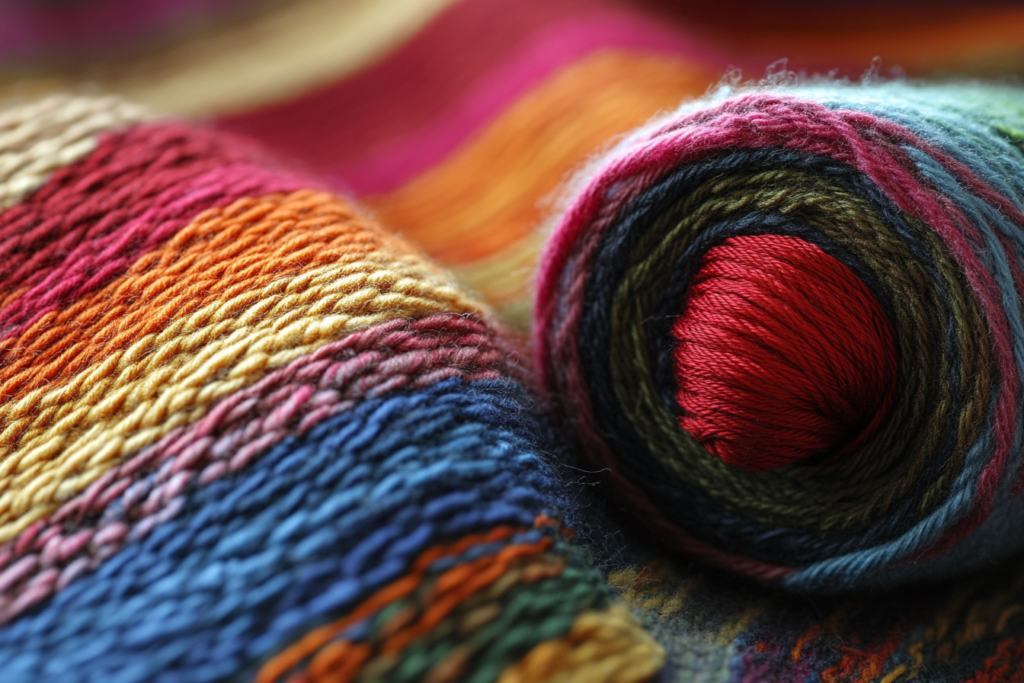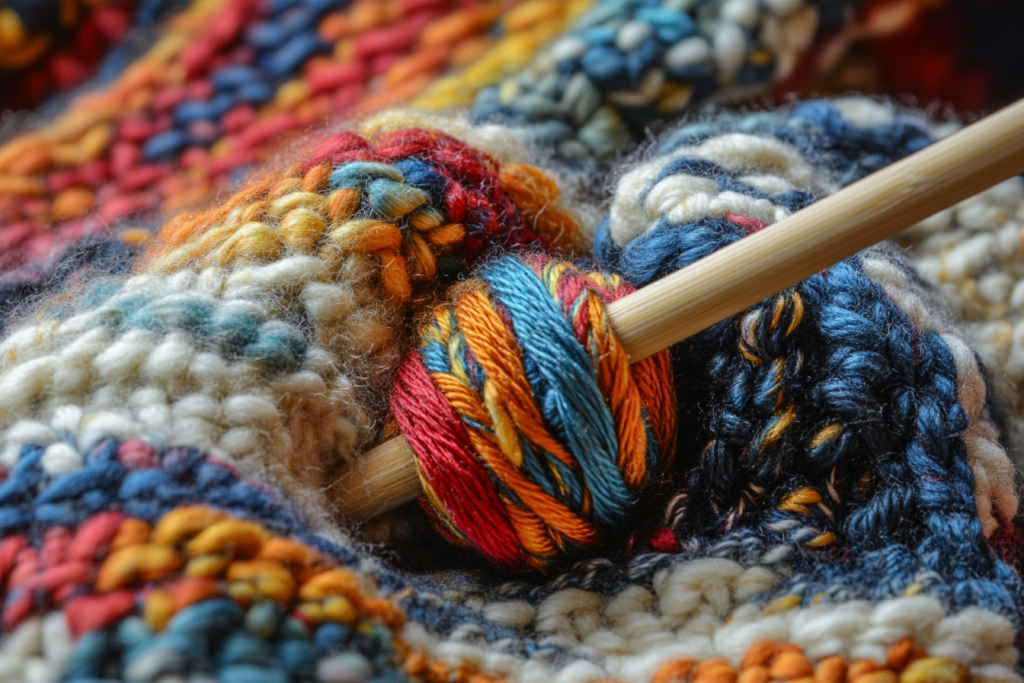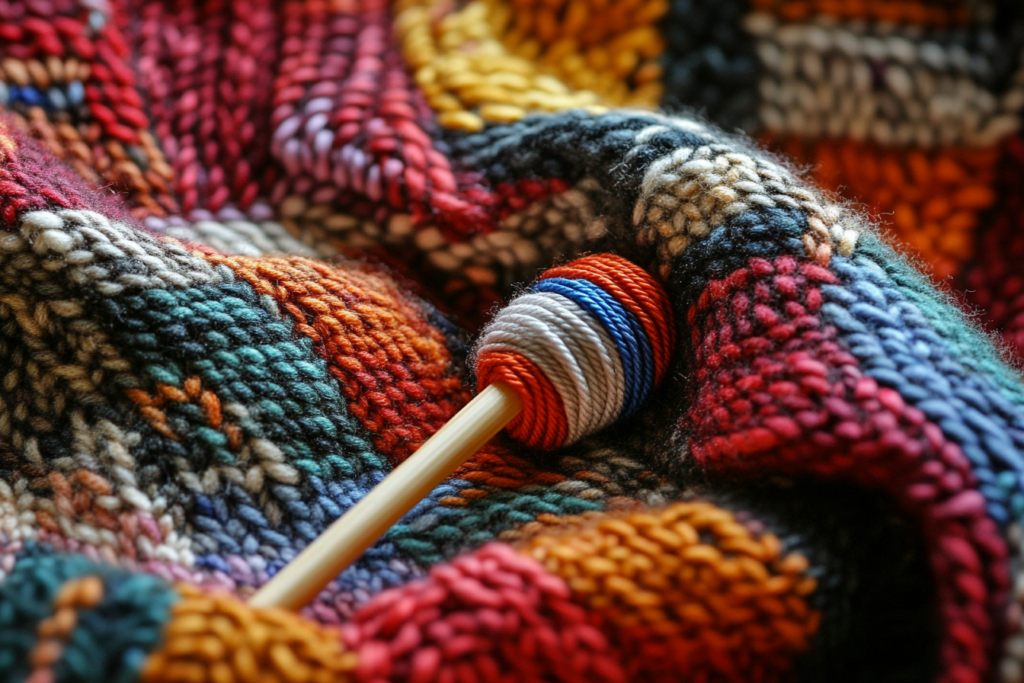Intarsia: The Multi-Color Knitting Technique for Bold Patterns
Meta Description: Intarsia is a woolen knitting technique that creates multi-colored patterns without floats. Each color is wrapped around a bobbin to prevent tangling. Learn how it works and its uses in fashion.
What is Intarsia Knitting?
Intarsia is a knitting technique used to create patterns and images with multiple colors. Unlike stranded knitting (Fair Isle), where yarns are carried across the back, intarsia uses separate blocks of color without floats. Each color section has its own yarn bobbin to prevent tangling, making it ideal for bold, graphic designs in sweaters, scarves, and home textiles.
This technique is commonly used in woolen and cotton knitting and is featured in high-fashion knitwear, traditional crafts, and DIY knitting projects.


Key Features of Intarsia Knitting
✔ Multiple Colors Without Floats – Each color section has its own separate yarn block, reducing bulk.
✔ Bobbins for Yarn Control – Prevents tangling by wrapping different colors around bobbins.
✔ Distinct Color Changes – Creates sharp, clean transitions between colors.
✔ Best for Large Designs – Ideal for logos, pictures, geometric shapes, and color blocking.
✔ Common in Hand & Machine Knitting – Used in hand-knitted and mass-produced garments.
How Intarsia Works in Knitting
- Choose a Pattern – Designs with large blocks of color work best.
- Prepare Yarn Bobbins – Each color section is wound on a separate bobbin or butterfly wrap.
- Start Knitting – When changing colors, twist yarns together at the transition point to prevent gaps.
- Maintain Tension – Keep stitches even and consistent to avoid holes between color changes.
- Weave in Ends – Since each color has a separate strand, ends need to be woven in after finishing.
Intarsia vs. Other Knitting Techniques
| Technique | Intarsia Knitting | Fair Isle (Stranded Knitting) | Jacquard Knitting |
|---|---|---|---|
| Color Blocks | Large, distinct color sections | Small, repeating motifs | Intricate multi-color designs |
| Floats on Back | No floats | Short floats carried across stitches | May have long floats |
| Yarn Usage | Each color has a separate bobbin | Uses two colors per row, alternating | Multiple colors per row |
| Best For | Logos, geometric patterns, large images | Nordic sweaters, small motifs | High-fashion knits, detailed designs |
Intarsia creates large, clean patterns, while Fair Isle and Jacquard knitting are better for small, detailed designs.
Where is Intarsia Used in Fashion?
📌 Sweaters & Knitwear – Used for bold patterns, logos, and graphic designs.
📌 Scarves & Accessories – Creates colorful, statement pieces.
📌 Luxury & Designer Fashion – Brands like Prada, Missoni, and Burberry feature intarsia knits in high-end collections.
📌 Home Décor – Common in blankets, cushions, and wall hangings.
📌 DIY & Handmade Crafts – Popular among knitters who love colorwork.
Tips for Knitting Intarsia Successfully
✔ Use Yarn Bobbins – Keeps multiple colors organized and prevents tangling.
✔ Twist Yarn at Color Changes – Avoids gaps and holes in the design.
✔ Maintain Even Tension – Prevents puckering or loose stitches.
✔ Weave in Ends Neatly – Since intarsia leaves many yarn tails, secure them carefully for a polished finish.
✔ Block the Finished Piece – Helps flatten and shape the final design.
Why Choose Intarsia Knitting?
✔ Perfect for Personalized Designs – Great for logos, initials, and picture knitting.
✔ Less Bulk Than Stranded Knitting – No floats on the back make it lighter and more breathable.
✔ Great for Bold Color Blocking – Ideal for modern fashion and artistic knitwear.
✔ A Fun Challenge for Knitters – Engaging for those who love multi-color knitting projects.
Conclusion: The Timeless Art of Intarsia Knitting
Intarsia knitting is a versatile and creative technique that allows for bold, multi-colored patterns without carrying floats. Whether used in handmade sweaters, high-fashion knitwear, or cozy home décor, this method brings intricate colorwork to life.
With a bit of practice and patience, intarsia knitting opens up endless design possibilities for both hobbyists and professional designers alike.



